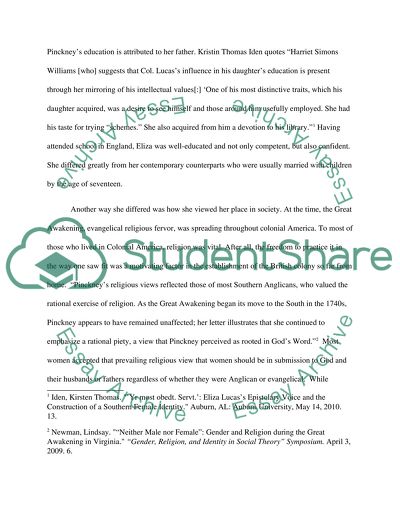Cite this document
(“Eliza Lucas Pinckney Research Paper Example | Topics and Well Written Essays - 2500 words”, n.d.)
Retrieved from https://studentshare.org/history/1431891-eliza-lucas-pinckney
Retrieved from https://studentshare.org/history/1431891-eliza-lucas-pinckney
(Eliza Lucas Pinckney Research Paper Example | Topics and Well Written Essays - 2500 Words)
https://studentshare.org/history/1431891-eliza-lucas-pinckney.
https://studentshare.org/history/1431891-eliza-lucas-pinckney.
“Eliza Lucas Pinckney Research Paper Example | Topics and Well Written Essays - 2500 Words”, n.d. https://studentshare.org/history/1431891-eliza-lucas-pinckney.


